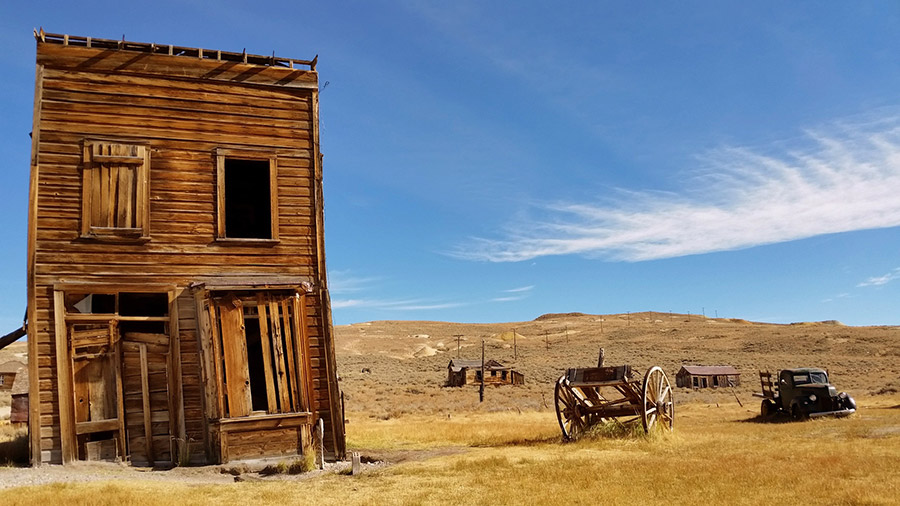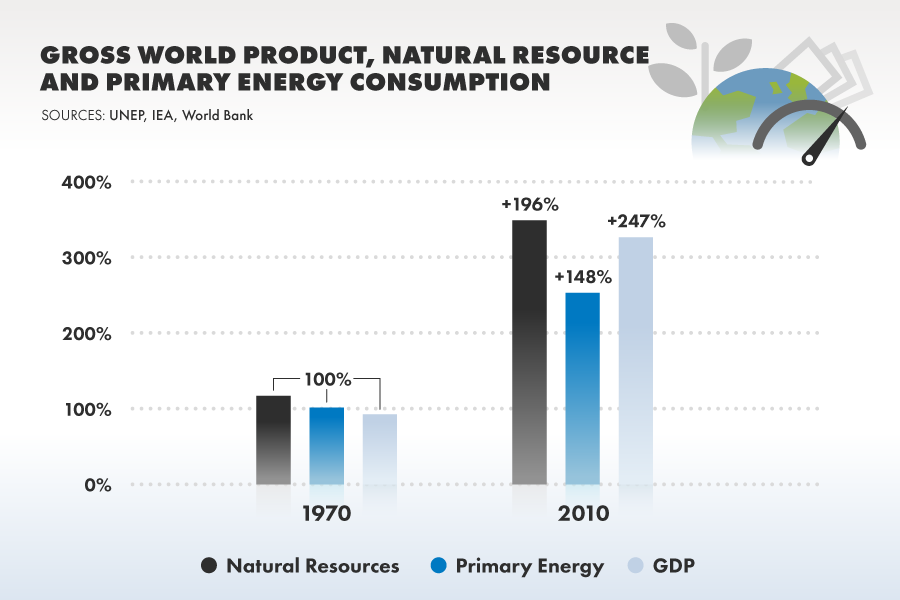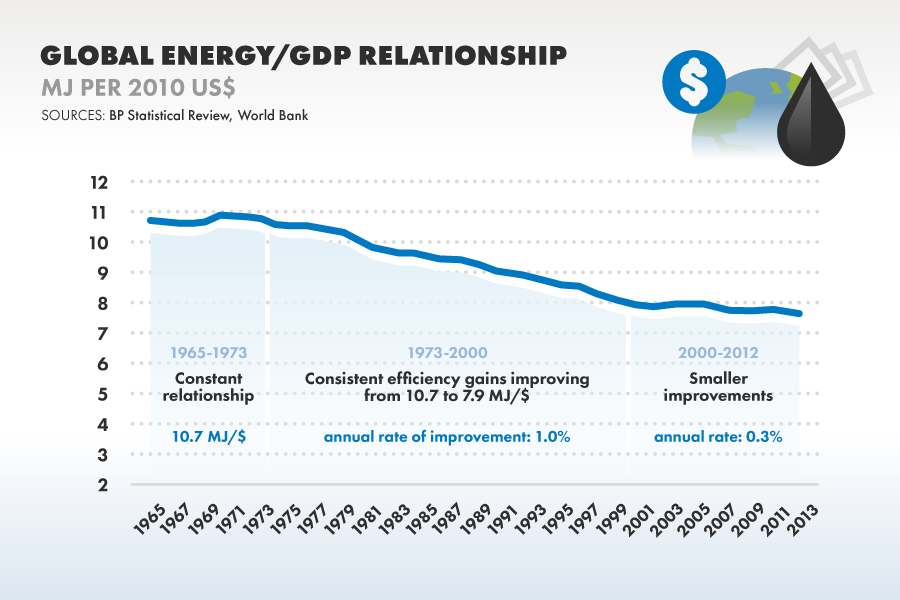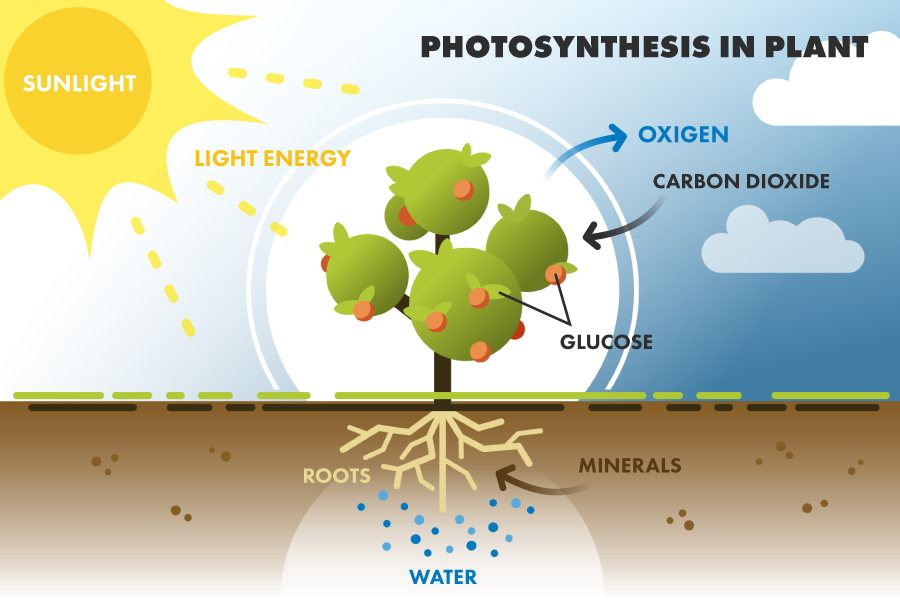Was hinter unserem Erfolg steckt: Energie und Rohstoffe
Cover Story 2/4

"Turning to dust" is a proverb accurately describing what happens with things over time. If we don't put effort into maintaining a car or a house, sunlight, wind and rain as well as the mechanical wear from their use, slowly but steadily turn them into a pile of rubble that is no longer useful. The term behind this process is called entropy. Or, to use another simple analogy: if we never clean up, at one point our living or working space will become a useless mess we can't even access, let alone find anything we might need.

To counteract this perpetual force of destruction, we have to put in hard work: repainting walls, replacing broken roof tiles, fixing a leaking pipe. And we clean up regularly, some more often than others, before chaos completely wins. Nature does the same: after a plant has died, a new one grows out of the ground, turning the disorganized molecules of rotting plant biomass into yet another beautiful and well-organized shoot.
What do all these efforts have in common? They require energy - for us to produce and apply the new paint, for the plant to grow. We need fuels to run a factory or food for our body, while the energy for plants is coming from a process called photosynthesis, the ingenious way of nature to turn sunlight into glucose that provides the energy to assemble new branches, leaves and flowers from molecules available in air and soil, assembling elements like carbon, hydrogen, nitrogen, phosphorus, oxygen, iron, and many more into life.
More activity means more energy and resource use
It may seem obvious and certainly was to our ancestors farming their land, but it's neither part of today's common sense nor anywhere represented in standard economic theory: every time we fight entropy and try to create order, we apply energy to organize resources into more organized forms. If we build a car, we need electricity and heat to convert raw materials into that shiny piece of human ingenuity, we need fuels to drive it, and energy for regular maintenance so it doesn't break down. And we even need energy to disassemble the vehicle at the end of its life and dispose of or recycle the parts. If we want two cars instead of one, the amount of energy needed is roughly twice as much. We can become a little bit better at building cars as we improve our manufacturing process, or a bit more efficient at retrieving or converting raw materials. There is - however - no way around using more energy for more units of economic output, irrespective of what kind of "more" we are doing.

Over time, we can document that correlation well. Between 1970 and 2010, total global extraction of natural resources from our planet (fuels, ores, salts, biomass, etc.) is estimated to have grown 3.2-fold from 22 to 70 billion tons. During the same time period, the size of the world economy, adjusted for inflation, grew 3.4-fold from $18.9 to $65.6 trillion. For one additional unit of Gross World Product (GWP), we needed close to one additional units of natural resources.

When looking at energy, relationships look similar. Final energy use (electricity, or transportation fuels like gasoline and diesel) track the size of the world economy the same way as other natural resources. Until the first energy crisis in 1973, energy consumption and GWP were directly correlated - to achieve one more dollar of economic output, we needed 10.7 MJ of primary energy. After energy suddenly became more expensive, we managed to slight reduce overall primary energy use per unit of GWP between 1973 and 2000 to around 7.9 MJ, by improving processing efficiency, particularly in electeicity generation and the production of bulk materials like steel, aluminum and copper. Since the year 2000, our improvements have slowed down, as fewer large efficiency gains are left, and globalization has added more transportation needs to the economy:: to achieve the same amount of GWP next year, we need 0.997 units of this year's energy. Should we continue at the same pace, doubling the global economy between 2015 and 2050 (which means 2% real growth every year) would require approximately 1.9 times (or 190%) of today's energy. This is if we are accurately accounting for GDP and inflation and are not overstating growth numbers.
For individual economies, these relationships are a lot weaker, as globalization has moved a lot of resource processing to low-cost countries. As most advanced economies have shifted from manufacturing things to importing energy and natural resources as parts of goods produced elsewhere, they seem to become more energy- and resource-efficient on paper, where in fact they are not. The processing just happens elsewhere, for example in China..
Photosynthesis, still the most important process for life and our energy systems

Where does all that energy come from? In 2014, over 90% of all the energy used by humans is the output of past and present photosynthesic plant growth. In 2014, total global energy consumption was 13,147 MTOE, where a small part (5%) from currently growing plant biomass, but mostly (85%) from fossil fuels like coal, natural gas and oil that represent nothing but ancient biomass stored underground during the past 500 million years.
For this conversation, it is important to understand that the sun fuels more than 95% of all energy use on Planet Earth, as wind and hydro power are equally driven by heat from sunshine moving air and water. The only sources that didn't require solar contributions during the past billion years are nuclear power (4.6% of global primary energy production in 2014) and geothermal energy (0.05%).
Our primary helper: prehistoric solar energy
During the industrial age, economic growth has mainly be attributed to our human prowess and ingenuity, ignoring that, without fossil solar power, it would simply have been impossible to convert all those resources into houses, cars, planes and mobile phones.
We are consuming those fossil stores of coal, natural gas and oil at a breathtaking rate: each year, we approximately use the quantity that took around 4.5 million years to form, or after 7 seconds into January 1 of each new year, we have used up what our planet took an entire year to produce. And all this energy was almost free for us during the past 250 years.
We used and still use fossil energy for all the things we do today. We extract minerals like copper, iron or silicone from the ground, we refine them, and turn them into products, like building materials, machinery, or computers. We transport these around the globe, and travel ourselves, we build, maintain and heat our factories, offices and living spaces. Also, we use this same fossil energy to grow food, as we have long moved away from simply growing what is possible on a given plot of land without fossil inputs. Current sunlight isn't enough to feed all 7.4 billion humans.
All these inputs are also used to create renewable energy infrastructure. Solar panels, wind turbines, and batteries are mostly manufactured by using fossil fuels to extract and convert natural resources into a final product. So far, we have achieved little: the share of fossil fuels in global energy consumption has dropped from 88% in 1985 to 86% in 2015. Ironically, in order to further accelerate that, we would need even more fossil fuels in absolute terms.

